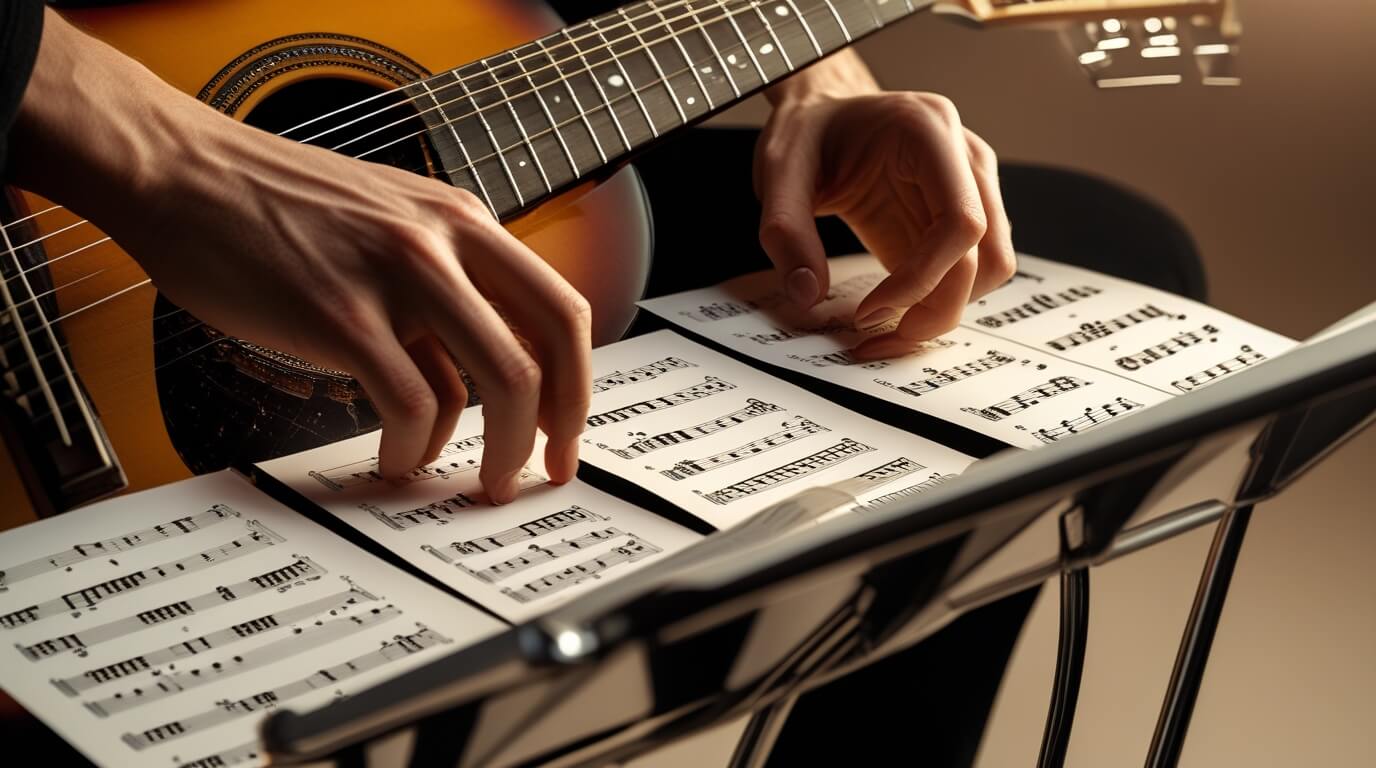August 12, 2025

Reading guitar tabs and sheet music is one of the most valuable skills a guitarist can develop. Tabs give you a shortcut to playing your favorite songs, while sheet music unlocks the ability to play any piece, understand rhythms, and communicate with other musicians.
If you’ve been avoiding learning them because they look complicated, don’t worry—you can learn both faster than you think. Here’s a detailed roadmap to mastering the skill.
Tabs are the easiest entry point because they visually map directly to your guitar’s strings.
Pro Tip: Don’t try to memorize all the symbols at once. Learn them as they appear in songs you want to play.
For thousands of free tabs, check Ultimate Guitar or interactive tools like Songsterr that let you slow down and loop tricky parts.
While tabs tell you where to put your fingers, standard notation tells you when to play and for how long.
If sheet music still feels mysterious, start with free lessons on Musictheory.net which break it down into beginner-friendly chunks.
Many modern songbooks give you both formats side-by-side—this is gold for fast learning. You get finger placement from the tab and rhythm/timing from the notation.
If you want to read quickly, sight-reading is essential. This is where you play music you’ve never seen before, without stopping.
Daily Routine Example:
For more metronome tips, see How to Use a Metronome Effectively for Practice.
Reading quickly is not just about knowing the notes—it’s about staying in time. Backing tracks simulate playing with a band, forcing you to keep up even if you make mistakes.
Just like reading words instead of letters, recognizing chord shapes and scale patterns will drastically speed up your reading.
For example:
Once you’ve seen these enough times, you’ll read them instantly without counting frets.
Don’t stay in your comfort zone for too long. Try reading pieces that are slightly harder than what you can currently play. This keeps your brain learning at a fast pace.
One technique is "shadow reading"—reading a piece while listening to a recording without playing. This strengthens your mental note recognition before you even pick up the guitar.
Keep a simple notebook or spreadsheet of the songs and exercises you’ve practiced. Mark down the BPM you can play them at and how long it took you to learn each.
Learning to read tabs and sheet music quickly isn’t about becoming a music theory genius overnight—it’s about repetition, real-world application, and breaking the learning into bite-sized steps. By combining tab familiarity with rhythm knowledge from notation, practicing daily with a metronome, and using resources like Ultimate Guitar, Songsterr, and Musictheory.net, you’ll gain speed and accuracy in weeks, not years.
Stay up to date with the latest tips, expert insights, product reviews, and step-by-step guides to help you grow, create, and succeed—no matter your industry or passion.